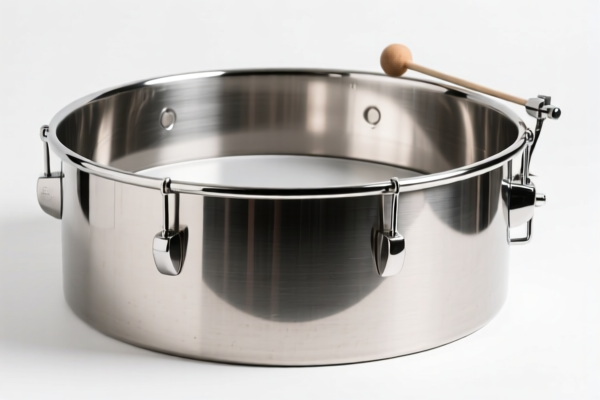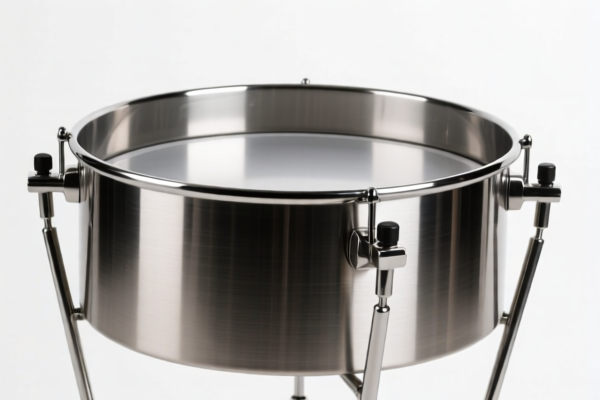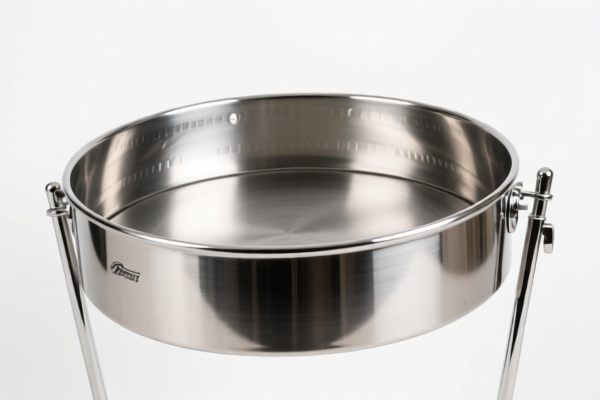| HS Code | Official Doc | Tariff Rate | Origin | Destination | Effective Date |
|---|---|---|---|---|---|
| 8201906000 | Doc | 55.0% | CN | US | 2025-05-12 |
| 8201903000 | Doc | 2¢ each + 5.1%+55.0% | CN | US | 2025-05-12 |
| 8205595560 | Doc | 60.3% | CN | US | 2025-05-12 |




Drum Hammer
A drum hammer is a specialized hand tool primarily used for applying focused impact force, typically to drive objects into other materials without causing significant marring or damage to the surrounding area. While the term can broadly refer to various impact tools, it most commonly describes hammers designed for use with chisels, punches, and other tools in metalworking, sculpting, and jewelry making.
Material
Drum hammers are constructed from a variety of materials, chosen for their weight, durability, and ability to transmit force effectively. Common materials include:
- Steel: The most prevalent material, offering high strength and hardness. Alloy steels are frequently used for increased toughness.
- Brass: Softer than steel, brass hammers are used when minimizing damage to the work piece is critical. They are often used with softer metals like gold and silver.
- Plastic/Rubber: Used for applications where a very soft impact is required, or to avoid sparking.
- Titanium: Lightweight and strong, offering a good balance of power and reduced fatigue for the user.
Purpose
The primary purpose of a drum hammer is to deliver controlled force for:
- Driving: Inserting pins, rivets, or other fasteners.
- Forming: Shaping metal through controlled impacts.
- Cutting/Splitting: Used with chisels to cut or split materials.
- Texturing: Creating specific surface patterns.
- Jewelry Making: Setting stones, forming metal components, and texturing.
Function
Drum hammers function by converting kinetic energy from the user’s swing into focused impact force. Key functional aspects include:
- Head Weight: Heavier heads deliver more force but require more strength to control.
- Face Shape: Different face shapes are optimized for specific tasks (e.g., flat for general driving, rounded for forming, pointed for precision work).
- Handle Material & Length: Handles provide grip and leverage. Longer handles increase swing speed and force, while shorter handles offer greater control.
- Balance: A well-balanced hammer reduces fatigue and improves accuracy.
Usage Scenarios
- Metalworking: Driving drifts, shaping metal components, breaking welds.
- Sculpting: Chipping away at stone or metal to create forms.
- Jewelry Making: Setting stones, forming wire, texturing metal surfaces.
- Automotive Repair: Driving pins, removing stuck components.
- Stone Masonry: Splitting stone, shaping details.
- Watchmaking: Precision adjustments and component fitting.
Common Types
- Ball-Peen Hammer: Features a rounded end (peen) on one side, used for shaping metal and riveting.
- Cross-Peen Hammer: Has a wedge-shaped end, useful for drawing out metal and creating specific curves.
- Straight-Peen Hammer: Similar to cross-peen, but with a straight wedge.
- Planishing Hammer: Features large, flat faces for smoothing metal surfaces.
- Raising Hammer: Used for stretching and forming metal sheets.
- Chasing Hammer: Used with chasing tools for detailed metalwork.
- Brass Hammer: Soft-faced hammer for delicate work.
- Rubber Mallet: For non-marring impacts.
- Dead Blow Hammer: Contains shot or sand to minimize rebound and maximize force transfer.
Drum hammers fall under the category of handtools. Based on the provided information, the following HS codes may be relevant:
- 8205595560: Handtools (including glass cutters) not elsewhere specified or included; blow torches and similar self-contained torches; vises, clamps and the like, other than accessories for and parts of machine tools or water-jet cutting machines; anvils; portable forges; hand- or pedal-operated grinding wheels with frameworks; base metal parts thereof: Other handtools (including glass cutters) and parts thereof: Other: Of iron or steel Other (including parts). This code covers a broad range of handtools not specifically classified elsewhere, including those made of iron or steel. The description includes "other handtools," suggesting it could encompass drum hammers if they don't fall into a more specific category.
- 8201906000: Other handtools of a kind used in agriculture, horticulture or forestry, and parts thereof: Other. This code is for handtools used in agriculture, horticulture, or forestry. While a drum hammer isn’t typically associated with these fields, it could be applicable if used for specialized tasks within these industries.
- 8205595560: Handtools (including glass cutters) not elsewhere specified or included; blow torches and similar self-contained torches; vises, clamps and the like, other than accessories for and parts of machine tools or water-jet cutting machines; anvils; portable forges; hand- or pedal-operated grinding wheels with frameworks; base metal parts thereof: Other handtools (including glass cutters) and parts thereof: Other: Of iron or steel Other (including parts). This code is a general category for handtools not elsewhere specified, and may be applicable if the drum hammer doesn’t fit into a more specific classification.
Regarding HS code 8205595560, please note that the applicable tax rate is 60.3%, comprised of a 5.3% base tariff and a 25.0% additional tariff, increasing to 30% after April 2, 2025.
Customer Reviews
No reviews yet.